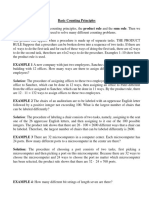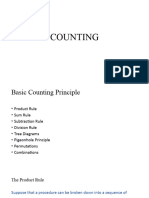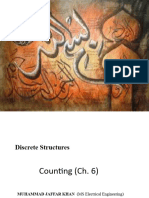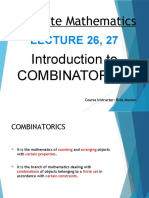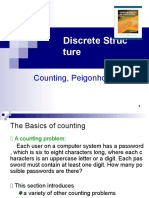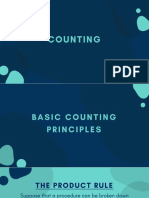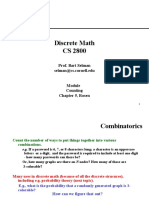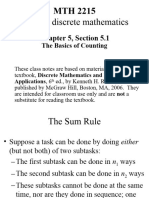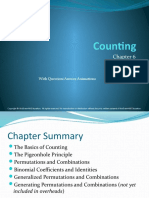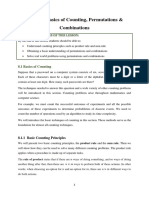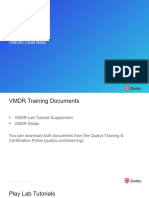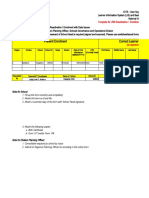0% found this document useful (0 votes)
35 views41 pagesLecture Notes 13 - Counting - Basic Principles
The document discusses combinatorics, focusing on counting principles such as the Product Rule and Sum Rule, which are used to solve various counting problems. It provides examples and exercises that illustrate how to apply these principles to determine the number of ways to complete tasks, choose courses, and label items. Additionally, it covers the principle of inclusion-exclusion for overlapping sets and offers practice questions for further understanding.
Uploaded by
mubashir.sagittariusCopyright
© © All Rights Reserved
We take content rights seriously. If you suspect this is your content, claim it here.
Available Formats
Download as PPTX, PDF, TXT or read online on Scribd
0% found this document useful (0 votes)
35 views41 pagesLecture Notes 13 - Counting - Basic Principles
The document discusses combinatorics, focusing on counting principles such as the Product Rule and Sum Rule, which are used to solve various counting problems. It provides examples and exercises that illustrate how to apply these principles to determine the number of ways to complete tasks, choose courses, and label items. Additionally, it covers the principle of inclusion-exclusion for overlapping sets and offers practice questions for further understanding.
Uploaded by
mubashir.sagittariusCopyright
© © All Rights Reserved
We take content rights seriously. If you suspect this is your content, claim it here.
Available Formats
Download as PPTX, PDF, TXT or read online on Scribd
/ 41
